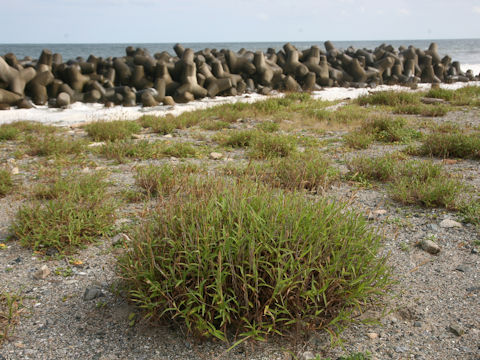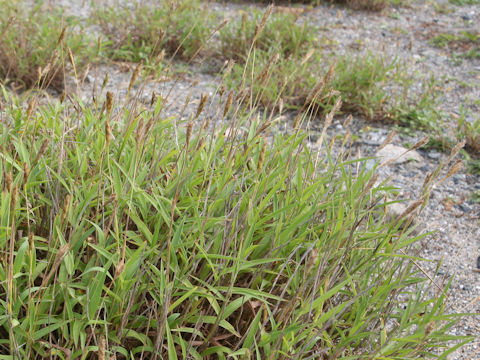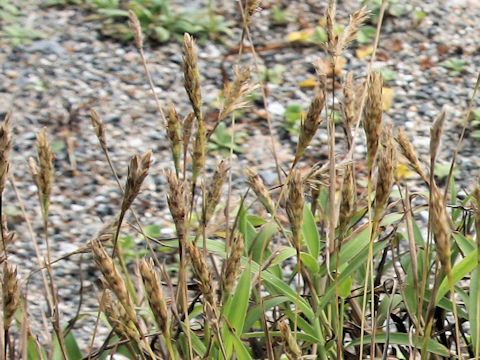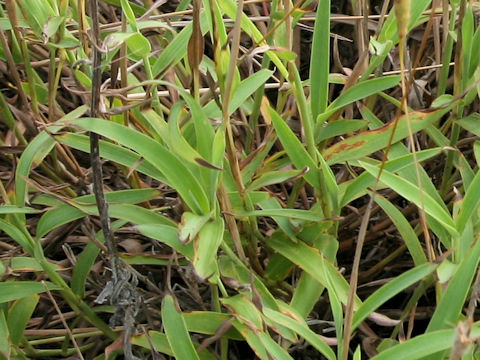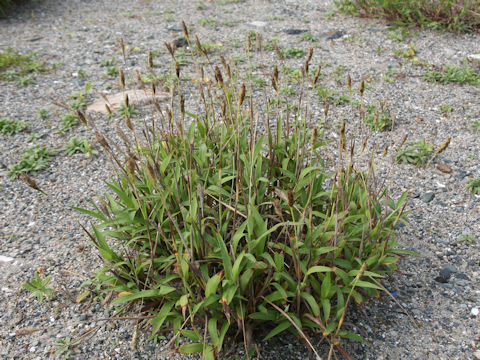
|
The "Kamono-hashi" (Ischaemum aristatum var. glaucum) belongs to Poaceae (the Grass family). It is a perennial herb that is distributed from Honshu to Shikoku and Kyushu in Japan. It grows in moist meadows or near the coast and is 30-80 cm tall. The plants grow large in clusters. The nodes of the culms are hairless, and the leaves are 15-30 cm long, 0.5-1 cm wide, linear, hairless on both sides, with a 3-4 mm long membranous ligule between the leaf blade and the leaf sheath that wraps the culm. The inflorescence appears to be a single spike, but it is actually two spikes closely attached to each other. The Japanese name comes from the fact that the inflorescence, which consists of two spikes, resembles the bill of "kamo" (duck). It is a C4 plant (a plant that performs C4-type photosynthesis).
|
